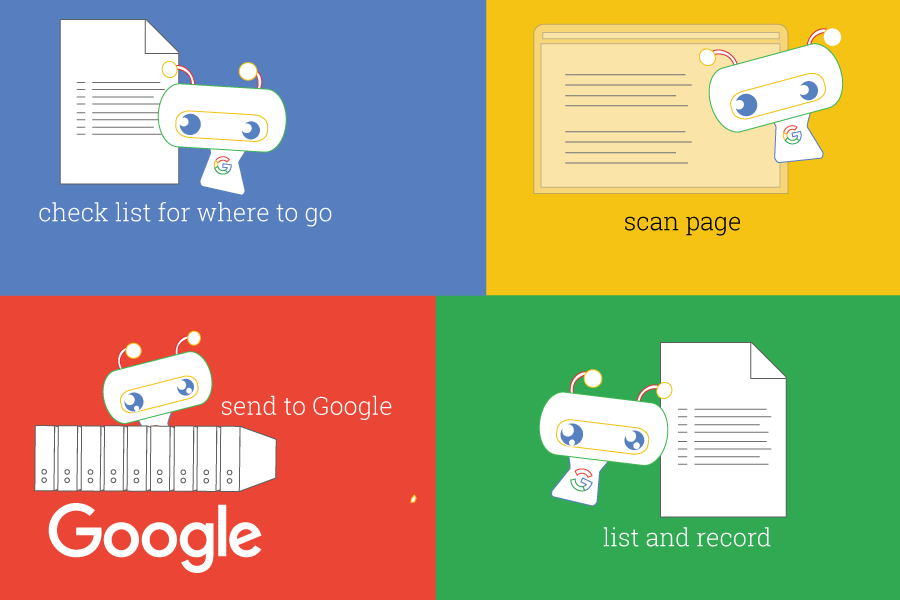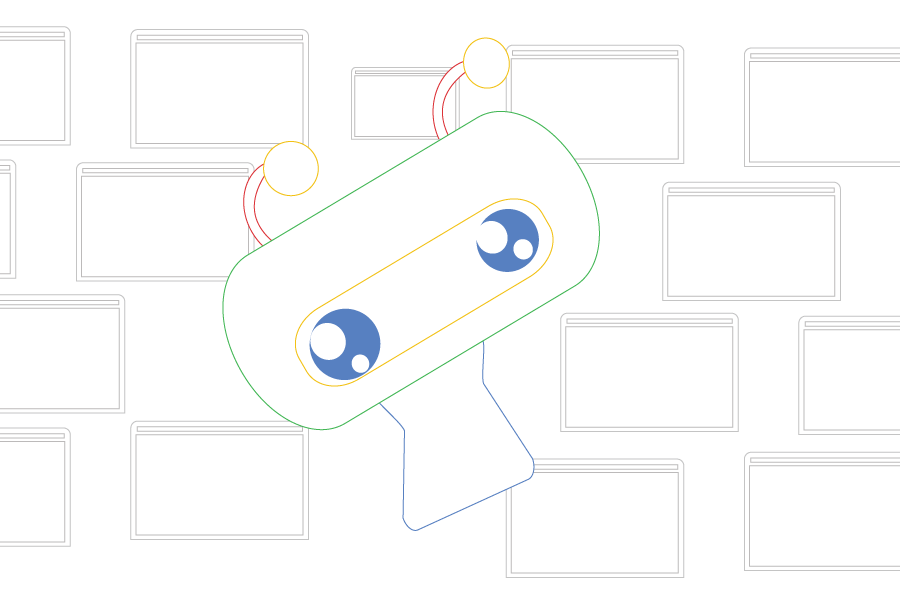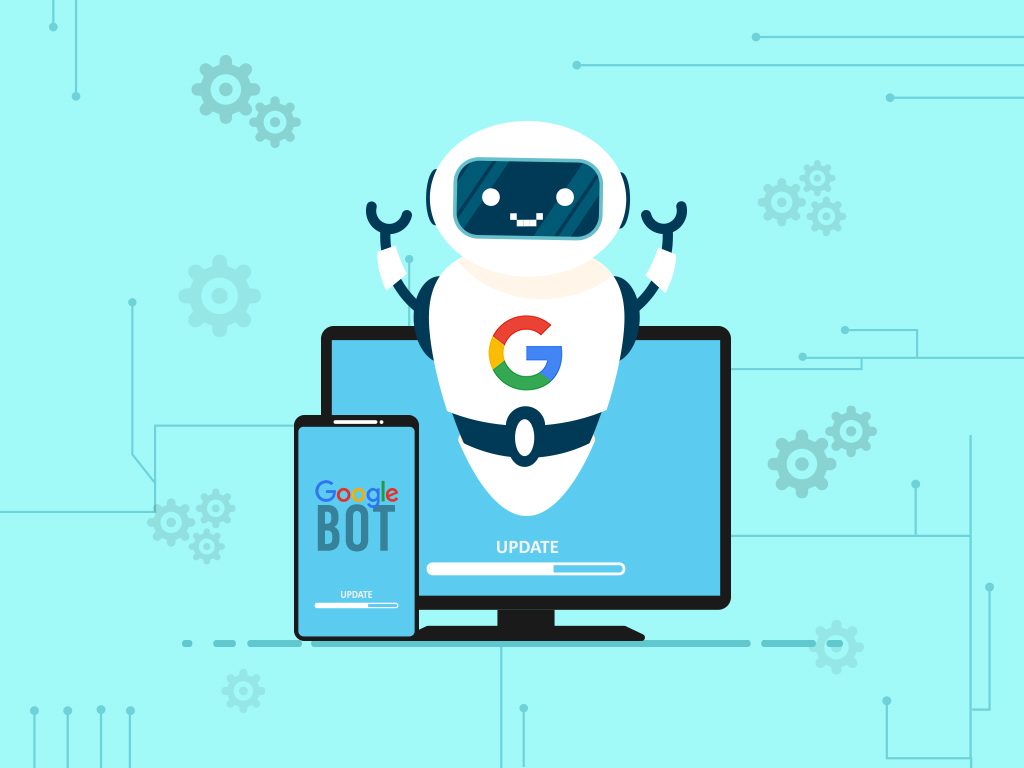GoogleBot Optimization can be tricky especially since you cannot control how the spider perceives your site. As Google announced that they are going to update the user agent of GoogleBot come December, this is also a call for us SEOs to rethink how we can optimize for Google crawlers.
This update is a great signal on how Google values freshness. Simply, because it regards that user-agent strings reflect newer browser versions. If they thought of a system for this, what more for content and user experience, right?
However, both crawler types obey the same product token (useent token) in robots.txt. This means that a developer cannot selectively target either Googlebot-mobile or Googlebot-desktop using robots.txt.
And so, for those who are engaging in unethical practices like user-agent sniffing, I suggest sticking to white-hat practices and reap results from them.
What is Googlebot?
Googlebot (also known as Google bot, Google Robot or Google Spider) is a type of software designed to follow links. It gathers information and then sends that information somewhere else.
Therefore, with this in mind, we can simply say that;
- Googlebot is the web crawlers used by Google.
- Used by Google Platforms to find and retrieve website pages.
- The information gathered by Googlebot is used to update the Google index.
Although this may be true, there is a slight difference between Googlebot and Google index.
Whereas Google index takes the content it receives from Googlebot and uses it to rank pages. Not to mention that the first step of being ranked by Google is to be retrieved by Googlebot.
Googlebot Web Crawler is generally as important as it sounds to both desktop and mobile users. Whereby, Googlebot is the generic name for Google’s web crawler.
Googlebot is the general name for two different types of crawlers.
- Desktop Googlebot Crawlers - that simulates a user on the desktop.
- Mobile Googlebot Crawlers - that simulates a user on a mobile device.
In the first place, a website will probably be crawled by both Googlebot Desktop and Googlebot Mobile.
Meaning that the subtype of Googlebot Crawlers can be identified by looking at the user agent string in the request. Also, it’s important to realize that Googlebot visits billions of website pages.
Whether you are awake or asleep, Googlebot is constantly visiting pages all over the web.
What is a User Agent?
For the non-technical person, a user agent can be an alien term but what they don’t know is that they have been utilizing this every day that they explore the web.
A user agent is responsible for connecting the user and the internet. Ultimately, you are part of that chain of communication if you are an SEO because it would be a great practice to optimize for user agents but not to the point that you exploit these types to turn them in your favor.
There are many User Agent types but we will just focus on the area that matters to SEO. User agents are put to work when a browser detects and loads a website. In this case, GoogleBot is the one to do this and it is mainly responsible for retrieving the content from sites in accordance with what the user requests from the web.
Simply put, the user agent helps in turning user behavior and action to commands. The user agent also takes the device, type of network, and the search engine into account so it can properly customize the user experience depending on intent.
Googlebot Websites Crawlability
Firstly, ranking in the search engines requires a website with flawless technical SEO. Luckily, the Yoast SEO plugin takes care of (almost) everything on your WordPress site. Still, if you really want to get the most out of your website and keep on outranking the competition, some basic knowledge of technical SEO is a must.
Secondly, crawlability has to do with the possibilities Google has to crawl your website. Not to mention that crawlers can be blocked from your site. For instance, there are a few ways to block a crawler from your website.
Under those circumstances, if your website or a page on your website is blocked, you’re saying to Google’s crawler: “do not come here”. As a result, your site or the respective page won’t turn up in the search results in most of these cases.
How does Googlebot work?
For most sites, Googlebot shouldn’t access your site more than once every few seconds on average. However, due to delays, it’s possible that the rate will appear to be slightly higher over short periods. Googlebot was designed to be run simultaneously by thousands of machines to improve performance and scale as the web grows.
Also, to cut down on bandwidth usage, they run many crawlers on machines located near the sites that they might crawl. Therefore, your logs may show visits from several machines at google.com, all with the user-agent Googlebot. Their goal is to crawl as many pages from your site as we can on each visit without overwhelming your server’s bandwidth.
If your site is having trouble keeping up with Google’s crawling requests, you can request a change in the crawl rate. Although crawlability is just the very basics of technical SEO, it has to do with all the things that enable Google to index your site. Even though, for most people, it’s already pretty advanced stuff.
Nevertheless, if you’re blocking – perhaps even without knowing! – crawlers from your site, you’ll never rank high in Google. So, if you’re serious about SEO, your website crawlability should matter to you! Below is the general serving purpose of Googlebot Crawlers. Including,
Googlebot Web Crawlers Sitemap
In a nutshell, Googlebot Crawlers uses sitemaps and databases of links discovered during previous crawls to determine where to go next.
Whenever the crawler finds new links on a site, it adds them to the list of pages to visit next. If Googlebot finds changes in the links or broken links, it will make a note of that so the index can be updated.
Further, the program determines how often it will crawl pages. In reality, to make sure Googlebot can correctly index your site, you need to check its crawlability. Whereby, if your site is available to crawlers they come around often.
Googlebot Web Crawlers Indexing
The most compelling evidence is that a crawler follows the links on the web. For this reason, that is why a crawler is also called a robot, a bot, or a spider. Another key point is that Googlebot Crawlers goes around the internet 24/7.
Once they land on a particular website, they save the HTML version of a page in a gigantic database, called the index. This index is updated every time the crawler comes around your website and finds a new or revised version of it.
Depending on how important Google deems your site and the number of changes you make on your website, the crawler comes around more or less often.
How does Googlebot Web Crawlers “see” a webpage?
Just because Googlebot can see your pages does not mean that Google has a perfect picture of exactly what those pages are. In fact, Googlebot does not see a website the same way as humans do. Remarkably, humans can see the image, but what Googlebot sees is only the code calling that image.
As has been noted, Googlebot may be able to access that webpage (the HTML file), but not be able to access the image found on that webpage for various reasons. In that scenario the Google index will not include that image, meaning that Google has an incomplete understanding of your webpage.
Further, if any of those components are not accessible to Googlebot, it will not send them to the Google index. They aren’t just images. In reality, there are many pieces to a webpage. Thereby, for Google to be able to rank your web pages optimally, Google needs the complete picture.
How does Google Access Web Content?
It’s almost impossible to keep a web server secret by not publishing links to it. For example, as soon as someone follows a link from your “secret” server to another web server, your “secret” URL may appear in the referrer tag and can be stored and published by the other web server in its referrer log.
Similarly, the web has many outdated and broken links. Whenever someone publishes an incorrect link to your site or fails to update links to reflect changes in your server, Googlebot will try to crawl an incorrect link from your site.
If you want to prevent Googlebot from crawling content on your site, you have a number of options. Be aware of the difference between preventing Googlebot from crawling a page, preventing Googlebot from indexing a page, and preventing a page from being accessible at all by both crawlers or users.
There are many scenarios where Googlebot might not be able to access web content.
Here are a few common ones:
- Resource blocked by robots.txt
- Page links not readable or incorrect
- Over-reliance on Flash or other technology that web crawlers may have issues with
- Bad HTML or coding errors
- Overly complicated dynamic links
In brief, most of these things can be quickly checked by using the Google guidelines tool.
Whereby, if you have a Google account use the “fetch and render” tool found in the Google search console.
Definitely, this tool will provide you with a live example of exactly what Google sees for an individual page.
How do I Utilize the Googlebot crawlers?
Before you decide to block Googlebot, be aware that the user-agent string used by Googlebot is often spoofed by other crawlers.
It’s important to verify that a problematic request actually comes from Google. The best way to verify that a request actually comes from Googlebot is to use a reverse DNS lookup on the source IP of the request.
Googlebot and all respectable search engine bots will respect the directives in robots.txt, but some nogoodniks and spammers do not. Google actively fights spammers; if you notice spam pages or sites in Google Search results, you can report spam to Google.
As an illustration, a Google “Crawler” is a generic term for any program (such as a robot or spider). By all means that is used to automatically discover and scan websites by following links from one webpage to another.
1. The user-agent token
To demonstrate, Google’s main crawler is called Googlebot. Markedly, follow - Google’s list of tables with information about the common Google crawlers you may see in your referrer logs.
In addition to how they should be specified in robots.txt, the robots meta tags, and the X-Robots-Tag HTTP directives. Including,
For your information, the user-agent is used in the (User-agent) line in robots.txt. For one thing, to match a crawler type when writing crawl rules for your site.
Some crawlers have more than one token, as shown in the table you just visited. Whereas, you need to match only one crawler token for a rule to apply. Indeed, the list is not complete but covers most of the crawlers you might see on your website.
2. Full user agent string
This is a full description of the crawler and appears in the request and your weblogs too.
3. User agents in robots.txt
Where several user-agents are recognized in the robots.txt file, Google will follow the most specific. Therefore, if you want all of Google to be able to crawl your pages, you don’t need a robots.txt file at all.
Additionally, if you want to block or allow all of Google’s crawlers from accessing some of your content, you can do this by specifying Googlebot Crawlers as the user-agent.
For example, if you want all your pages to appear in Google search, and if you want AdSense ads to appear on your pages, you don’t need a robots.txt file. Similarly, if you want to block some pages from Google altogether, blocking the user-agent Googlebot will also block all Google’s other user-agents.
But if you want more fine-grained control, you can get more specific. For example, you might want all your pages to appear in Google Search, but you don’t want images in your personal directory to be crawled.
Allow or Disallow Google Agents
In this case, use robots.txt to disallow the user-agent Googlebot-image from crawling the files in your /personal directory (while allowing Googlebot to crawl all files), like this:
User-agent: Googlebot Disallow: User-agent: Googlebot-Image Disallow: /personal
To take another example, say that you want ads on all your pages, but you don’t want those pages to appear in Google Search.
Here, you’d block Googlebot, but allow Media partners-Google, like this:
User-agent: Googlebot Disallow: / User-agent: Mediapartners-Google Disallow:
4. User agents in robots meta tags
Some pages use multiple robots meta tags to specify directives for different crawlers, like this:
<meta name="robots" content="nofollow"><meta name="googlebot" content="noindex">
In this case, Google will use the sum of the negative directives, and Googlebot will follow both the noindex and nofollow directives.
See More detailed information about controlling how Google crawls and indexes your site.
Blocking Googlebot Crawlers from indexing your Site
There are various instances that lead to a website designer and or developer. Such as the jmexclusives to block Google from indexing their site.
For instance, while you want the root domain with the coming soon page to be index by Google.
Whereby, you don’t want the subdomain to be indexed. Of course, because at some point when the site is done, you’d probably delete the subdomain. So, what happens? There are a few things that could prevent Google from crawling (or indexing) your website.
For example, if your robots.txt file blocks the crawler, Google will not come to your website or specific web page. Equally, before crawling your website, the crawler will take a look at the HTTP header of your page. This HTTP header contains a status code. If this status code says that a page doesn’t exist, Google won’t crawl your website.
Finally, if the robots meta tag on a specific page blocks the search engine from indexing that page, Google will crawl that page, but won’t add it to its index. Below are the famous methods to use in order to drop Google from Crawling your site. Such as
1. Noindex Method
According to Google, including a meta tag with the content value of noindex and name value of robots comes handy.
For one thing, this will cause the Googlebot to completely drop the page. From the Google Search results when it next crawls.
As an illustration, below is a scheme of what the (noindex) meta tag looks like in the head of your web page.
<head>
<meta name="robots" content="noindex">
<title>Your cool website</title>
</head>
However, the meta tag will need to be included in every single page you want the Googlebot not to index.
Moreover, if you want to block the bot completely instead of telling which individual pages not to index, you’ll want to use the (robots.txt) method.
2. Robots.txt Method
Forthwith, the other method is to block all search engine crawler bots from indexing your site.
In fact, to do this, you’ll create a (robots.txt) file and place it at the root of the domain. And in short, the contents of robots.txt will be as follows.
User-agent: *
Disallow: /
Altogether, this tells all crawlers to not crawl the entire domain.
So for example, if you’ve got a subdomain of (dev.example-url.com) and you want just the subdomain of (dev) to be blocked you’ll want to place the (robots.txt) file at the root for the subdomain.
http://dev.example-url.com/robots.txt
Do I Need Both of these Methods?
Not at all! As a matter of fact, you only need one method but remember with the (noindex) tag, you’ll need to add it to every page you desire not to be indexed.
While the (robots.txt) will instruct the crawler to not index the entire subdomain.
All in all, this reminds me that you can as well utilize the HTML code implementation Plugins. Especially if you are a WordPress web developer by using the “Insert Headers and Footers Plugin.”
Takeaway,
Whenever I think of Googlebot Crawlers, all I see are cute and smart Wall-E like robots. Not to mention, speeding off on a quest to find and index knowledge in all corners of yet unknown worlds.
However, it’s always slightly disappointing to be reminded that Googlebot is ‘only’ a computer program. Generally speaking, written by Google for that matter. For sure, that which crawls the web and adds pages to its index.
To put it another way, a search engine like Google consists of a crawler, an index, and an algorithm. Whereas, the crawler follows the links. When Google’s crawler finds your website, it’ll read it and its content is saved in the index.
Therefore, it is always recommended that you make sure that your site pages are crawlable and well indexed.
Here: Search Robots: The Good, The Bad, and The Googlebot
Resources;
If you require customized SEO Services and Solutions Support, please feel free to Contact Us.
And in that case, through the comments box below share your inputs or even additional information. That might best interest and help other online readers and researchers like you.
After all, you’ll find more useful and related research content materials through the links below;
- What is Search Engine Optimization?
- SEO Best Routine Practices For Webmasters
- Yoast SEO Plugin For All WordPress Beginners
- SEO Analysis Tools | 10 Best for Every New Webmaster
- About: What are Google reCAPTCHA Keys?


